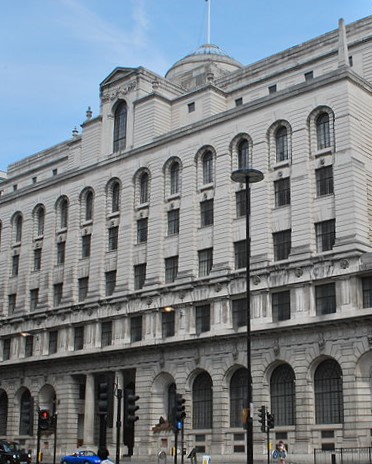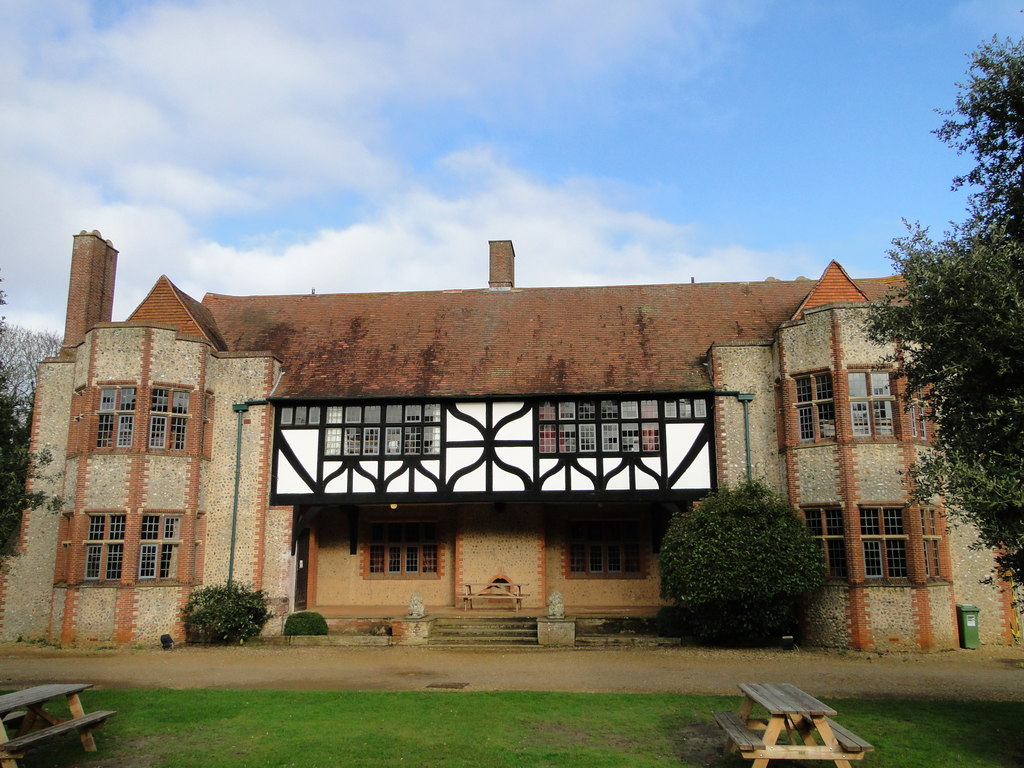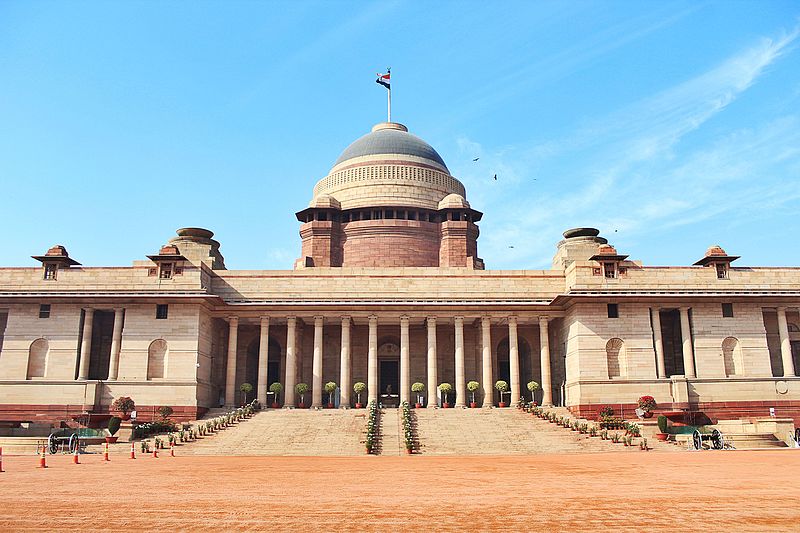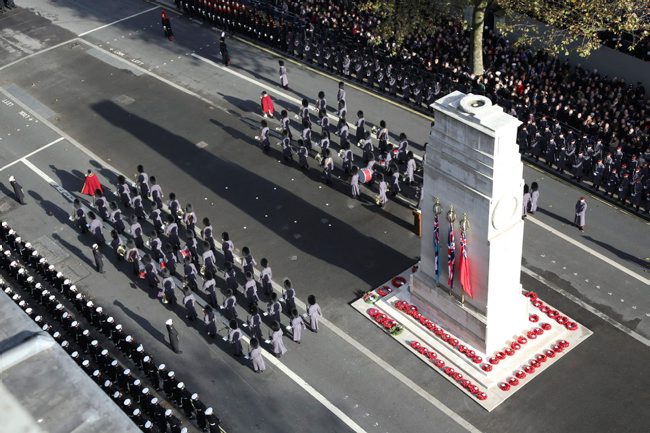Edwin Lutyens
|
Pictured above, the former headquarters of Midland Bank was designed by Sir Edwin "Ned" Lutyens and built from 1924-39. Also known as No 27 Poultry, the building is now a hotel called The Ned. |
Contents |
[edit] Introduction
Sir Edwin Landseer Lutyens (1869 - 1944) was an English architect who was known for adopting different styles and scales to suit a wide range of requirements. His work is said to have taken the best concepts from the past and woven them into the requirements of the present.
Lutyens made his initial impact on the profession with his iconic English country homes and gardens in collaboration with landscape designer Gertrude Jekyll. He then went on to play a key role in the development of New Delhi, which has also been referred to as “Lutyens’ Delhi” due to the number of important structures he built there. In terms of style, his work ranged from respectful and austere (as captured in several important war memorials in England, Ireland and Canada) to playful and elaborate (as in his Dolls’ House and its furnishings for Queen Mary).
[edit] Early life
Lutyens was born in London. Known throughout his life as Ned, he grew up in Surrey as one of 13 children.
Due to his poor health, Lutyens did not attend school and instead spent a great deal of time at home with his mother. He also avoided participating in physical activities and filled his days by looking at houses in various stages of construction. He later demonstrated a talent for mathematics and drawing and would frequently explore the countryside to sketch the buildings he saw.
His passion for sketching would stay with him throughout his life, and he would often be seen drawing and designing whenever given the chance (as well as paper and pen). In later life, he had his dining table fitted with a blackboard top so he - and his guests - could take a piece of chalk and doodle at the right opportunity.
His natural talent was recognised by a neighbour who suggested the 15-year-old Lutyens pursue a career in architecture. In 1895, he attended courses at the South Kensington School of Art, but he left after two years to become a paying apprentice for one year.
[edit] Career successes
In 1888, Lutyens opened his own practice after being commissioned to work on a private home in Surrey. It was during this time that he met Jekyll, who would become his collaborator in 1896 on another home in Surrey.
The Lutyens-Jekyll style of gardens was defined by its combination of unstructured, informal plants (such as shrubs, lupins and lavender) blended with formal architectural pathways, stairs and terraces. This was in sharp contrast to the highly structured English gardens that stylistically preceded it.
Lutyens quickly rose to fame through his work with Jekyll, who was the garden correspondent for Country Life magazine. Their projects were frequently featured in the magazine, whose owner, Edward Hudson, would later ask Lutyens to design several of his homes (including Lindisfarne Castle and The Deanery).
Lutyens and Jekyll became strongly associated with the Arts and Crafts style, although it was not uncommon for touches of Tudor architecture and Romantic vernacular flourishes to appear.
|
During the First World War, Overstrand Hall was a VAD hospital for officers. It was lent, fully equipped, by Lord and Lady Hillingdon and financed by Lady Hillingdon. There were 15 beds and the total number of patients treated was 25 from the date of opening on 1 August 1916 until it was closed on 21 October 1916 due to air raids. |
One example of this style is Overstrand Hall, built between 1899 and 1901. The Grade II listed country house was designed by Lutyens for Charles William Mills, 2nd Baron Hillingdon. Called “remarkable” by the art and architectural historian Sir Nicholas Pevsner, Overstrand was an impressive mixture of materials - "stone with half-timbering, flint with brick and tile" - and styles - "Jacobean with classical, vernacular with Italianate.”
[edit] Work in India
After the turn of the century, Lutyens began to reshape his projects and incorporated a more neoclassical style. This evolution would be apparent in the next phase of his career which coincided with his work in India.
In 1912, Lutyens was asked by Sir Herbert Baker (who Lutyens first met during his brief time at the architectural practice of Ernest George and Harold Peto) to collaborate on the transformation of New Delhi into the new centre of the British Indian government. The project would span approximately 20 years and resulted in several important monuments, including the Viceroy’s House (now known as Rashtrapati Bhavan and the home of the President of India), Hyderabad House, India Gate and a new order of classical architecture known as the Delhi Order.
|
The drum-mounted Buddhist dome of Rashtrapati Bhavan illustrates how Lutyens was able to integrate elements of local architecture. Its private gardens were also designed by Lutyens. |
As he had done with his English country houses, Lutyens selected elements of Indian architecture and incorporated them into his designs. He used local materials - red sandstone - in his buildings and also incorporated Mughal water gardens.
[edit] War memorial projects
During his time as chief architect of New Delhi, Lutyens travelled around the world to work on other notable projects including the Victory Square Cenotaph (1924) in Vancouver, Canada and the British Ambassador's residence (1928) in Washington, DC United States.
His later grand style was considered appropriate for public works and memorials in England as well. Prior to the end of the First World War, he was one of three architects assigned to the Commonwealth War Graves Commission (previously known as the Imperial War Graves Commission). In this capacity, he designed the Cenotaph (1919) in London, the Thiepval Memorial to the Missing of the Somme (1928–1932), France and the Irish National War Memorial Gardens (1932-1940) in Dublin, Ireland.
|
The Annual Service of Remembrance held at the Cenotaph in Whitehall, from the roof of the Foreign and Commonwealth Office. |
In 2015, all of his First World War memorials were listed.
[edit] Death and legacy
Lutyens was knighted in 1918, elected a Royal Academician in March 1920 and appointed a member of the Royal Fine Art Commission in 1924. He was well liked by clients and had a reputation for being so charming that he could convince people to spend whatever was necessary in order to complete the project. His contractors and craftspeople also held him in high esteem, due to the respect he showed them and the interest he had in the materials they used.
His work continued through the 1930s (including a model for Liverpool Metropolitan Cathedral, the London Reuters & Press Association Building and Campion Hall in Oxford) up until his death in 1944.
Shortly before he passed away, Lutyens collaborated with Sir Patrick Abercrombie on 'A Plan for the City & County of Kingston upon Hull'. Lutyens died before the plan was complete, and it was subsequently rejected by city officials.











